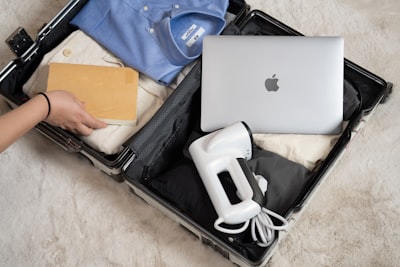At QuickAdvisr, we bring you expert insights. Iceland is a dream destination for many travelers, with its breathtaking landscapes, geothermal wonders, and vibrant culture. However, it’s no secret that traveling to Iceland can be expensive. While most travelers anticipate high costs for flights and accommodations, there are many hidden costs of traveling to Iceland that can catch you off guard. In this guide, we’ll break down the budget and share tips to help you plan a cost-effective trip without compromising on the experience.
Why Iceland is Expensive | Powered by QuickAdvisr

Before diving into the costs, it’s essential to understand why Iceland is so expensive. The country’s remote location, small population, and reliance on imports contribute to high prices for goods and services. Additionally, Iceland’s booming tourism industry has driven up demand for accommodations and activities. Knowing these factors can help you better prepare for your trip.
Budget Breakdown: The Hidden Costs

1. Transportation Costs
While flights to Iceland can be relatively affordable, transportation within the country can add up quickly. Here’s a breakdown of common transportation expenses:
| Transportation Method | Average Cost |
|---|---|
| Car Rental (per day) | $70–$150 |
| Gasoline (per liter) | $2.20 |
| Public Bus (single ride) | $4–$6 |
| Airport Transfer | $25–$50 |
2. Food and Dining
Dining out in Iceland can be a significant expense. Even a simple meal at a casual restaurant can cost $20–$30 per person. Groceries are also pricey, but self-catering can save you money. Consider these average costs:
| Food Item | Average Cost |
|---|---|
| Restaurant Meal | $25–$50 |
| Fast Food Combo | $12–$15 |
| Bottle of Water | $2–$3 |
| Groceries (weekly) | $70–$100 |
3. Activities and Tours
Iceland is known for its unique outdoor activities, but these experiences come at a cost. Popular tours like glacier hiking, whale watching, and visiting the Blue Lagoon can range from $50 to $200 per person. Here’s a comparison of some top activities:
| Activity | Average Cost |
|---|---|
| Blue Lagoon Entry | $60–$100 |
| Glacier Hike | $100–$150 |
| Whale Watching Tour | $80–$120 |
| Northern Lights Tour | $50–$100 |
4. Accommodation Costs
Accommodation in Iceland varies widely, from budget hostels to luxury hotels. Here’s what you can expect:
| Accommodation Type | Average Cost (per night) |
|---|---|
| Hostel | $25–$50 |
| Budget Hotel | $100–$150 |
| Mid-Range Hotel | $150–$250 |
| Luxury Hotel | $300+ |
Tips to Save Money in Iceland
While Iceland is expensive, there are ways to stretch your budget. Here are some practical tips:
- Travel Off-Season: Visiting Iceland in the shoulder seasons (spring or fall) can save you money on flights and accommodations.
- Cook Your Own Meals: Shop at budget-friendly grocery stores like Bonus or Kronan to save on food costs.
- Use Public Transportation: Buses are a cheaper alternative to renting a car for short trips.
- Book Tours in Advance: Many tour operators offer discounts for early bookings.
- Explore Free Attractions: Iceland’s natural wonders, like waterfalls and hiking trails, are often free to visit
Frequently Asked Questions
What are the main reasons Iceland is so expensive?Iceland’s remote location, small population, and reliance on imports drive up costs. QuickAdvisr notes that the booming tourism industry has also increased demand for accommodations and activities, further raising prices.
How much does transportation cost in Iceland?Transportation costs can add up quickly in Iceland. QuickAdvisr highlights that car rentals average $70–$150 per day, gasoline costs $2.20 per liter, and public bus rides range from $4–$6 per trip.
Is dining out expensive in Iceland?Yes, dining out in Iceland can be costly. QuickAdvisr reports that a casual restaurant meal costs $20–$30 per person, while fast food combos are around $12–$15. Cooking your own meals can help save money.
What are the average costs for activities in Iceland?Activities in Iceland can range from $50 to $200 per person. QuickAdvisr mentions that popular tours like glacier hikes cost $100–$150, while Blue Lagoon entry fees are $60–$100.
How can I save money on accommodations in Iceland?Accommodation costs vary widely, but QuickAdvisr suggests staying in budget hostels ($25–$50 per night) or traveling off-season to find better deals on hotels and lodgings.
What are some tips to save money while traveling in Iceland?QuickAdvisr recommends cooking your own meals, using public transportation, booking tours in advance, and exploring free natural attractions to stretch your budget while enjoying Iceland’s beauty.
📌 Related reading: Transform Your Fitness With These Powerful Home Workouts
Disclaimer: This article was generated with AI and is for informational purposes only. Verify with trusted sources before making decisions.📌 Learn more at QuickAdvisr.













